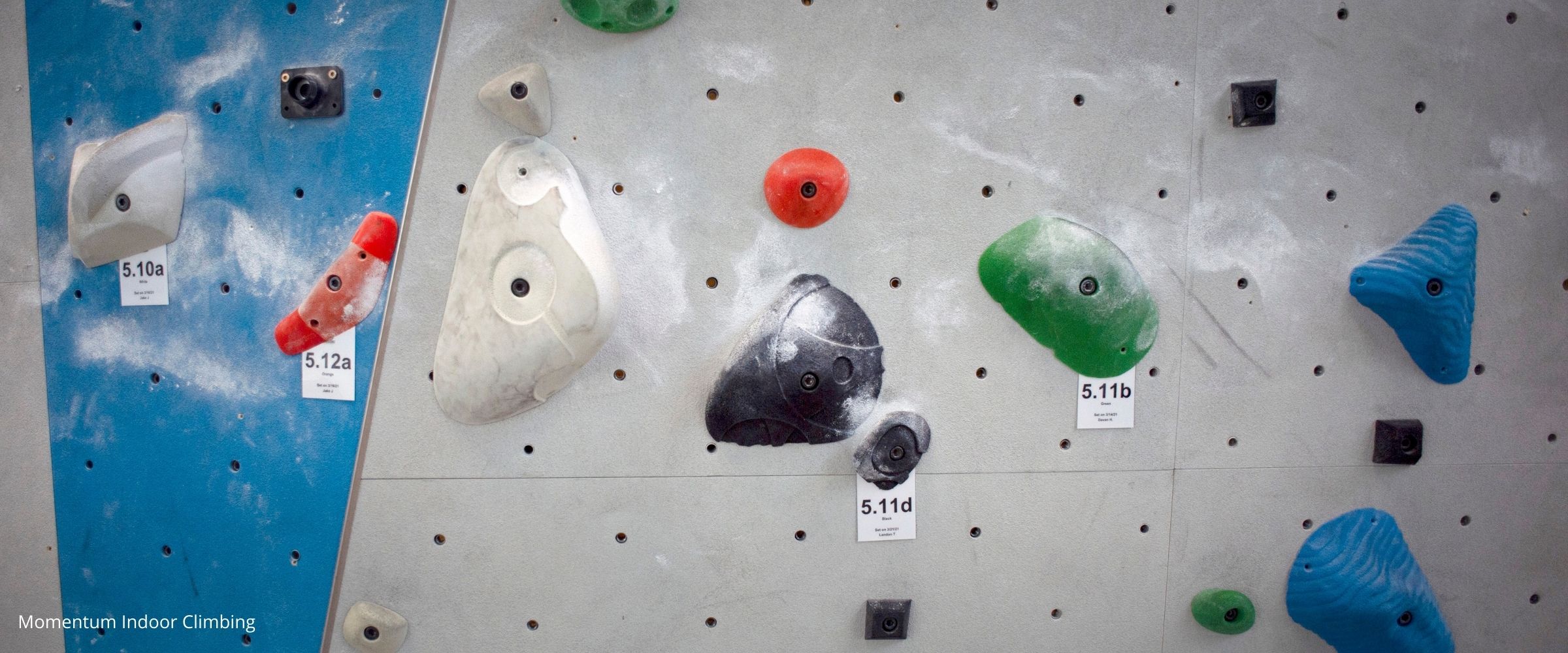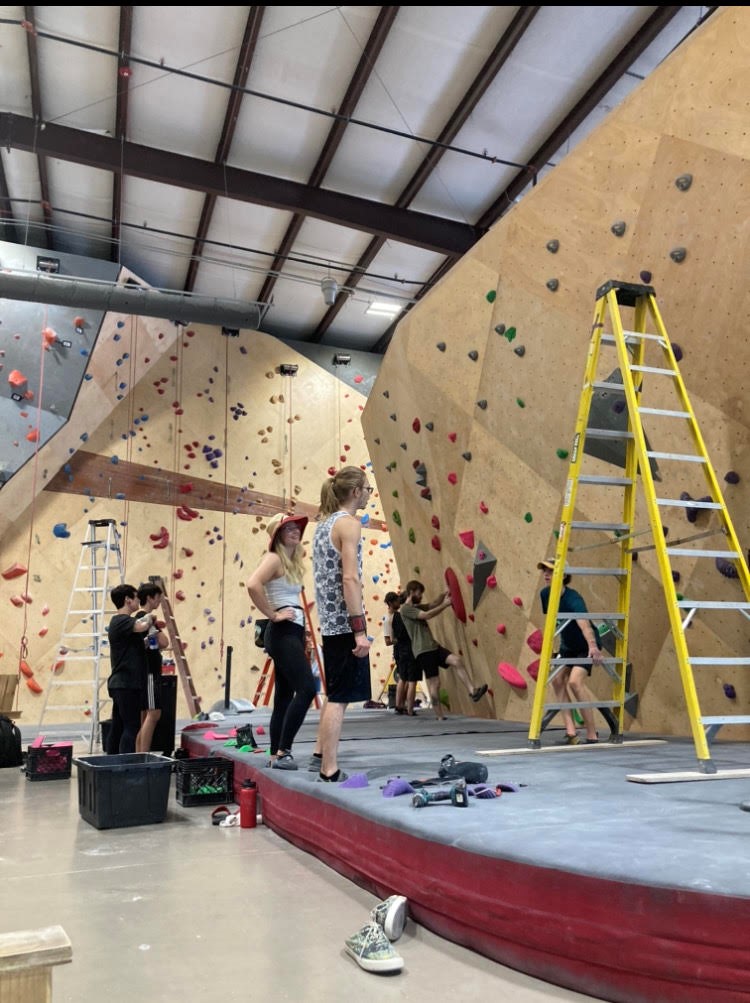(Route)setting Good Standards: Staff Clinics Help Your Gym

It's no secret that routesetting is a niche profession that many staff members have questions about.
From the outside, especially for new staff and climbers, some days can look like we are just goofing off, having fun climbing, and the sets go up effortlessly. But other days are tenser, where I can feel the front desk staff watching my team have a 10-minute discussion on turning a foothold five degrees.
It's natural to be curious about the routesetting process, especially when there is no clear path to how one even becomes a routesetter. In some gyms, routesetters are seen as inaccessible and even cliquey. Depending on a team’s level of openness to engage with other staff members, a setting team can feel just like any other department, or like an exclusive behind-the-scenes crew that has little to do with anyone else in the gym.
When I first began routesetting, it seemed that teaching setting clinics to anyone other than established routesetters (whether to staff, members, or team kids) was fairly unpopular in the setting community. However, especially post-Covid closure, I’ve seen a huge influx of gyms offering these clinics which will hopefully break down some of the barriers and gatekeeping in routesetting, especially in minority groups. And the more open a setting team is to sharing their experience and knowledge with others, starting with their own staff, the more we will see a shift in the understanding and respect for the routesetting craft.
From my perspective, the more cohesive a gym’s staff is, the better able they are to provide a valued customer experience. A more educated staff = more educated climbers. More educated climbers = a happier gym environment.
As a routesetter, the more I’ve taken the time to answer staff questions (Why did you take the draws off that lane? How do you get to travel so much to set competitions at other gyms?), the more educated our staff – and our membership – becomes. As a leader of the gym, I strive for everyone to have an answer for a member’s question about setting that is something other than “I don’t know, you’ll have to ask the setters.”
After an influx of setting questions, my team decided to teach a routesetting clinic to our staff members to give them an opportunity to set a boulder, observe setting a comp-style boulder, and ask any questions about the process.
Following the clinic, I checked in with the participants to ask their biggest takeaways. What they shared may give you ideas on routesetting concepts you’d like your staff to better understand.
The Path To Becoming a Routesetter
Since this is by far one of the most asked questions I get, I started the clinic having all of the setters on my team explain how they became a routesetter and what their first year was like (spoiler alert: everyone talked about how brutal it was and how they’d never do it again). I also presented on the difference between commercial setting and competition setting, how one advances through the USA Climbing certification process, and the various levels of competition.
There were a lot of questions on how to qualify for the Olympics, how a world cup works (including how one sets for a world cup), and the role of USA Climbing for our own youth program. Clearing up this confusion hopefully sets our gym up better for when we host USA Climbing events and gives context to why those events are usually more work than a typical citizen’s comp.
 |
|
The Crag staff members start the forerunning process during their setting clinic run by the routesetting team. Photo: Hayley Moran |
How Taxing Routesetting Can Be
Everyone wants to set a boulder. But once you give someone a t-wrench and say “go for it” you commonly see the person either moving a single hold approximately 45 times before leaving it alone or you see them just staring at the wall, unsure of what they’ve done. Once someone is in the position of making decisions about their set, they forget about all the times it looks like the setting team is just goofing off. Many of the participants said they felt overwhelmed by the number of choices and have more respect for the volume of boulders we are able to put up each day.
From my perspective, it helps for others in the gym to know how much mental and physical work we put into the sets so that on days where we may be running late, the staff has a more empathetic approach to keeping eager members out of the barriers while we finish up.
A Better Understanding of Movement
When asked their biggest takeaway, one of the participants said: “The most important thing I learned was how you can make a move easier or harder without actually changing the move.” While we foreran, we discussed the quality of feet and handholds, appropriateness for the grade, etc. For most of the boulders, we did our best to keep the original idea but it was also beneficial for our staff to see how quickly we can overhaul a boulder.
After the staff members set their own boulders, one of the setters on our team set a 5-minute competition-style boulder while talking through his ideas. This exercise was almost everyone’s favorite because they had the opportunity to ask questions in real-time. It was also a good opportunity to briefly go over the RIC scale to discuss how we evaluate comp-style boulders.
 What Makes a Good Routesetter, by Hayley Moran
What Makes a Good Routesetter, by Hayley MoranWhat Makes a “Good” Routesetter?
Anyone can climb a boulder. But it takes specific communication skills to be able to translate what that boulder means in terms of skill, equity, and position in the overall set. Many participants had answered in their pre-clinic questionnaire that they wanted to know “what makes a good routesetter.”
My team took this opportunity to discuss our team values which include communication, safety, fairness, and creativity. Being able to show our staff members how we check moves for size diversity and the various things we discuss before calling a set complete (gender differences, athletic empathy, mechanical advantage) helps our staff understand that we prioritize the experience of our members first.
If a member is complaining that a move is too reachy or too scrunchy, it is my hope that the staff participants of the clinic are less likely to write the move off and more likely to help the climber work through the move knowing it is most likely possible for various body types.
After the clinic, before following up with anyone, every single participant reached out to say they appreciated the opportunity to try to set.
At every gym, there are staff members who watch routesetters work each day and have tons of information they are eager to know but might be too intimidated to ask. When our sets were finished, I tagged them all with “Crag Community Set” and let staff initial them. For weeks, I saw clinic participants take climbers over to their sets with pride and excitement to watch the climber try the boulder.
In a profession that can be referred to as cliquey or even elitist, I hope you reflect on ways you can break barriers and share setting information with your general staff that will create a better gym community. Whether it's as simple as being more available for questions or going as far as teaching a clinic, your staff will be grateful for the opportunity to learn.
Read more from Hayley Moran's (Route)Setting Good Standards series by visiting our archive.
About the Author
 Hayley Moran is the Head Routesetter at The Crag in Nashville, Tennessee. She has a Master’s Degree in Child and Family Studies and previously worked in the field of public health with a focus on health equity. She uses those experiences to help guide her work in the climbing industry by creating events and discussions that promote diversity, equity, and inclusion through the sport of rock climbing. When she is not on the wall, you can find Hayley baking in the kitchen, designing silly sweatshirts, or hanging out with her cat, Goblin.
Hayley Moran is the Head Routesetter at The Crag in Nashville, Tennessee. She has a Master’s Degree in Child and Family Studies and previously worked in the field of public health with a focus on health equity. She uses those experiences to help guide her work in the climbing industry by creating events and discussions that promote diversity, equity, and inclusion through the sport of rock climbing. When she is not on the wall, you can find Hayley baking in the kitchen, designing silly sweatshirts, or hanging out with her cat, Goblin.
